Greek mythology is a window into the beliefs, values, and imagination of the ancient Greeks. These timeless tales of gods, heroes, and mythical creatures have left a lasting imprint on cultures worldwide. From the names of planets and constellations to modern movies and literature, Greek mythology continues to inspire and shape the world we live in. Names like Zeus, Athena, and Apollo are not only legendary but have become synonymous with power, wisdom, and beauty.
Here, we’ll explore some of the most iconic Greek mythology names. We’ll uncover the origins and meanings of these names, dive into the mythological stories behind them, and see how they remain relevant in our daily lives today. Whether you’re familiar with these names or encountering them for the first time, their rich histories will give you a deeper appreciation for the world of ancient myths.
Popular Greek Mythology Names and Their Meanings
Zeus
Who was he? Zeus was the god of the sky, lightning, and thunder. He ruled as the King of the Olympian gods.
Origin of the name: The name Zeus is derived from the ancient Greek word Dios, meaning “of Zeus” or “divine.”
Fun fact: Many ancient Greek rulers took the name Zeus or its variations in order to project strength and authority, linking themselves to the most powerful of the gods.
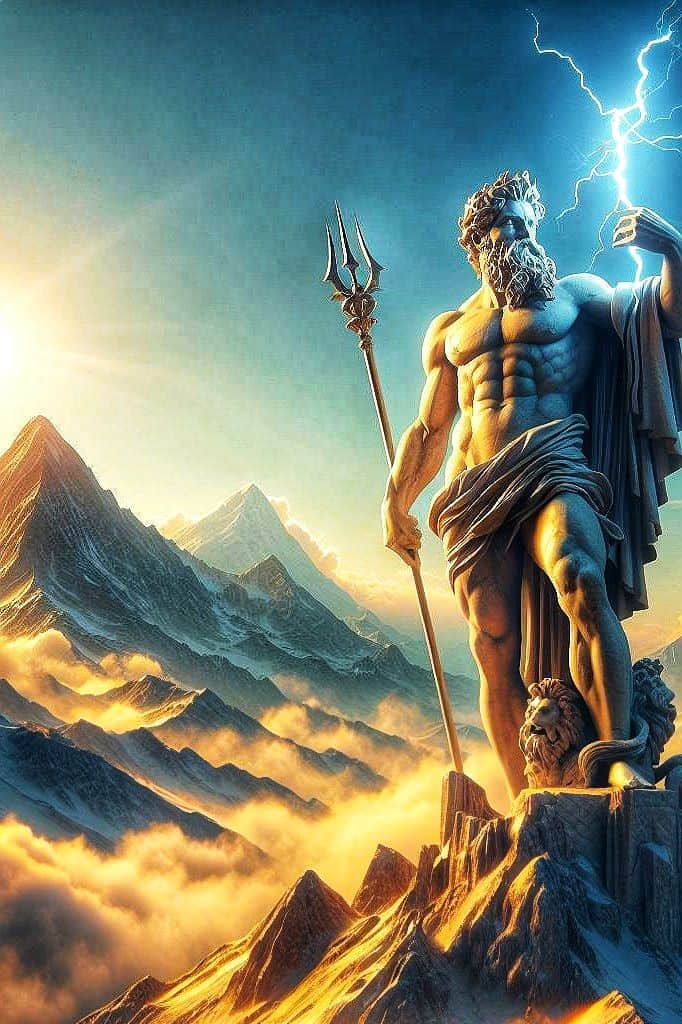
Athena
Who was she? Athena was the goddess of wisdom, war, and strategy, revered for her intelligence and tactical skill.
Name origin: Her name is possibly derived from the city of Athens, which was named in her honor.
Fun fact: According to myth, Athena was born fully grown and clad in armor, emerging from Zeus’s head after he swallowed her mother, Metis!
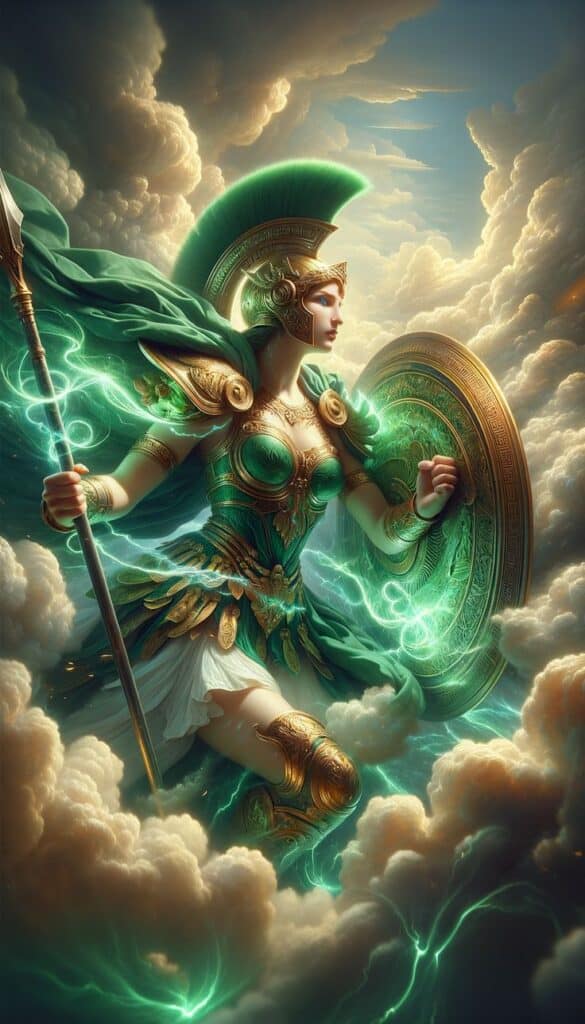
Apollo
Who was he? Apollo was the god of music, healing, prophecy, and the arts, representing harmony and order.
Name origin: His name comes from the Greek Apollon, though its meaning is debated. One theory suggests it means “destroyer.”
Fun fact: Apollo’s name lives on in modern times, notably through the NASA Apollo Missions, which aimed to land humans on the moon.
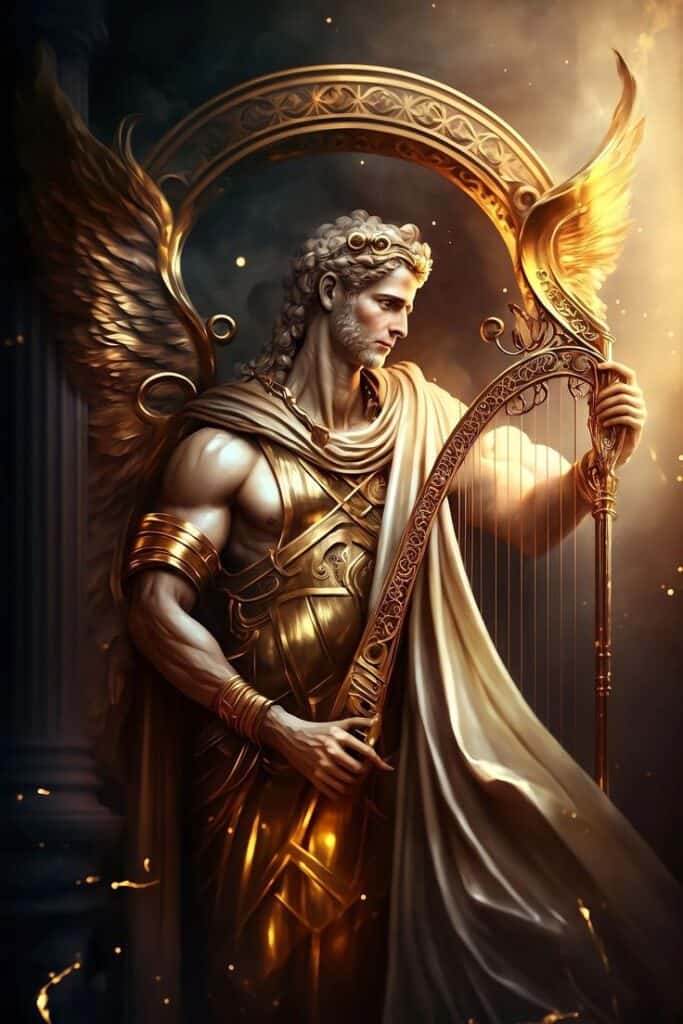
Hera
Who was she? Hera was the queen of the gods and the goddess of marriage and family, known for her jealousy and fierce protection of women.
Name origin: Her name is derived from the ancient Greek word Hera, which means “lady” or “mistress.”
Fun fact: Hera was often depicted as a regal woman, crowned with a diadem, and she had a special interest in protecting married women and children.
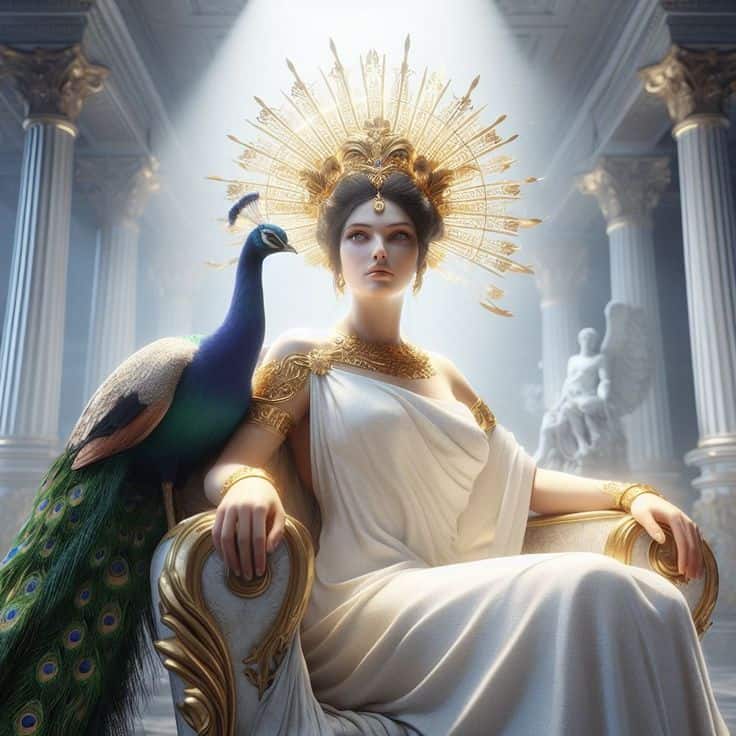
Poseidon
Who was he? Poseidon was the god of the sea, earthquakes, and horses, known for his tempestuous nature and powerful control over water.
Name origin: His name comes from the Greek word Poseidon, which may mean “husband of the earth.”
Fun fact: Poseidon wielded a trident, a three-pronged spear, which he used to create storms and earthquakes, symbolizing his dominion over the sea.
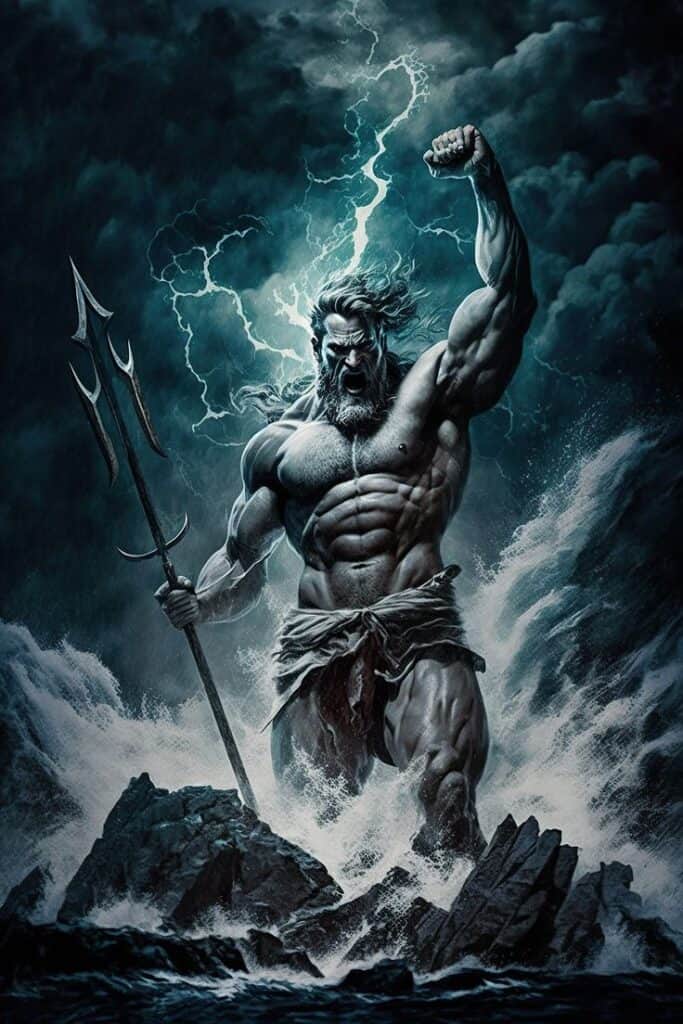
Aphrodite
Who was she? Aphrodite was the goddess of love, beauty, and desire, often associated with romantic attraction and sensual pleasure.
Name origin: Her name is believed to be linked to the ancient Greek word aphros, meaning “foam,” as she was said to have emerged from the sea foam.
Fun fact: Aphrodite’s symbols include the dove and the swan, and she is often depicted accompanied by Eros, the god of love.
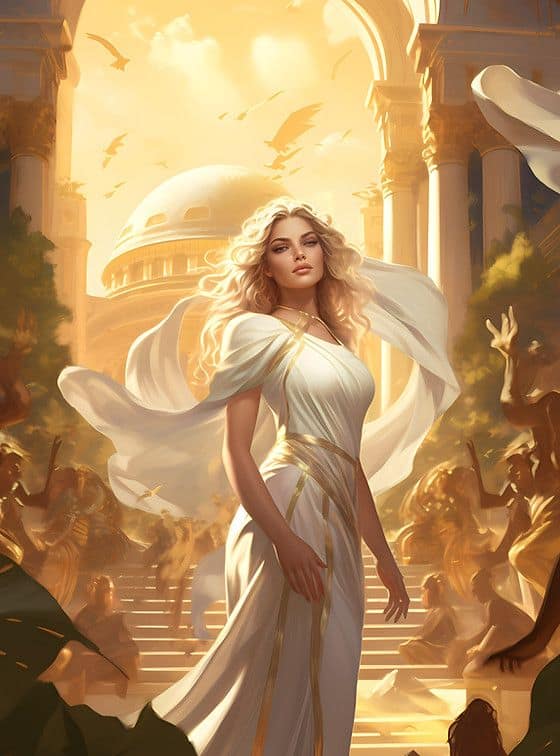
Hades
Who was he? Hades was the god of the underworld and the ruler of the dead, overseeing the realm of the afterlife.
Name origin: His name comes from the Greek Haides, which is thought to mean “the unseen” or “invisible.”
Fun fact: Despite his fearsome reputation, Hades was not considered evil. He merely ensured that the souls of the dead were properly cared for in his domain.

Demeter
Who was she? Demeter was the goddess of agriculture, grain, and fertility, crucial for ensuring bountiful harvests and nurturing the earth.
Name origin: Her name is derived from the ancient Greek words De (earth) and meter (mother), meaning “mother earth.”
Fun fact: Demeter’s most famous myth involves her daughter, Persephone, whose annual descent into the underworld explains the changing seasons.
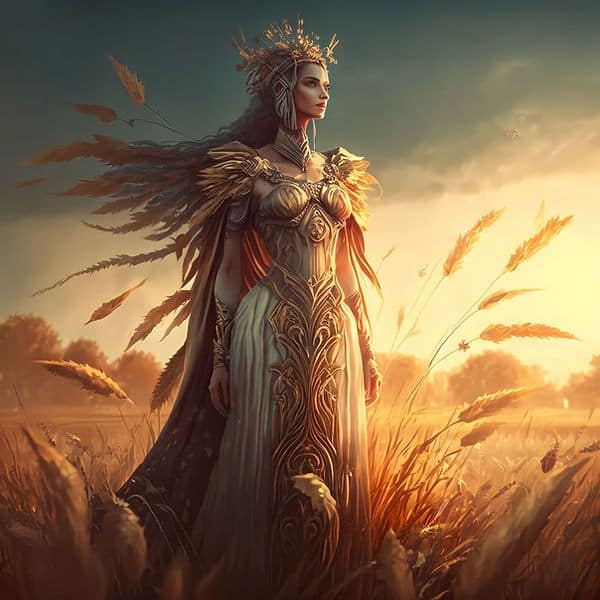
Hermes
Who was he? Hermes was the messenger of the gods, known for his speed and cunning. He was also the god of trade, thieves, and travelers.
Name origin: His name comes from the Greek Hermes, which may be linked to the word herma, meaning “a boundary marker.”
Fun fact: Hermes is often depicted wearing a winged helmet and sandals, symbolizing his role as a swift messenger who could travel between worlds.

Artemis
Who was she? Artemis was the goddess of the hunt, wilderness, and childbirth, often associated with the moon and protector of young girls.
Name origin: Her name may come from the ancient Greek word artemes, meaning “safe” or “unharmed,” reflecting her role as a protector.
Fun fact: Artemis is frequently depicted with a bow and arrows, accompanied by deer, and she was known for her fierce independence and loyalty to her family.
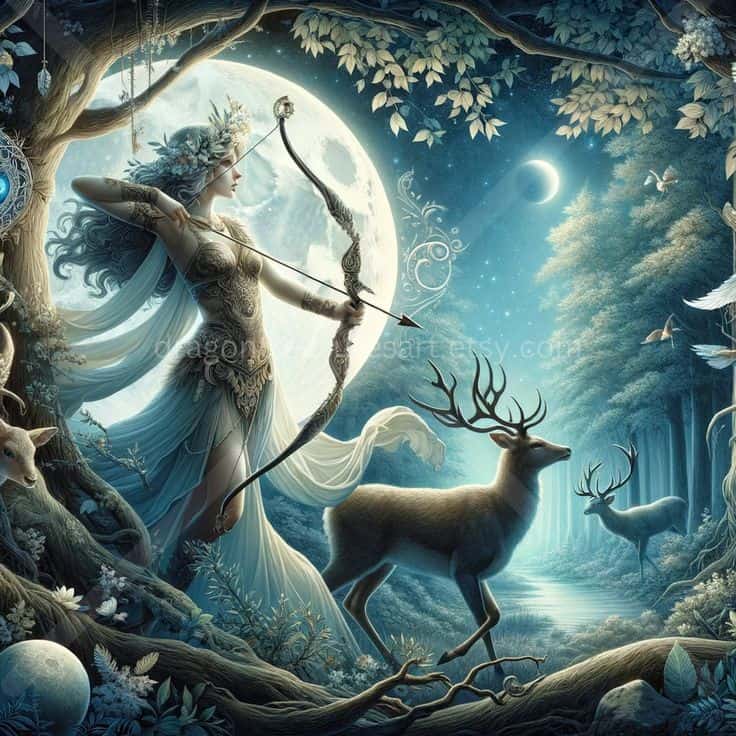
Hephaestus
Who was he? Hephaestus was the god of fire, metalworking, and craftsmanship, known for his skill in forging weapons and beautiful objects.
Name origin: His name comes from the Greek Hephaistos, possibly related to the word hephaios, meaning “to kindle” or “to burn.”
Fun fact: Unlike many other gods, Hephaestus was often depicted as physically imperfect, having been cast out of Olympus, but his artistry made him revered among the gods.
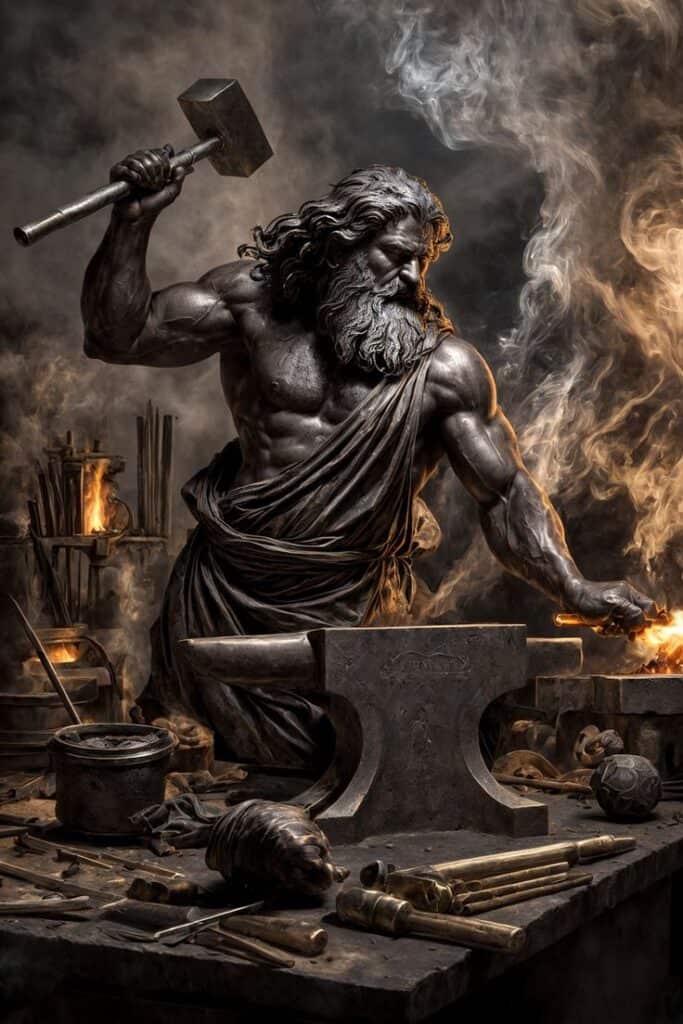
Dionysus
Who was he? Dionysus was the god of wine, fertility, and revelry, often associated with pleasure, festivity, and the transformative power of nature.
Name origin: His name is derived from the Greek Dionysos, possibly meaning “twice born,” referring to his unusual birth story.
Fun fact: Dionysus is celebrated for his ecstatic festivals, which often included theater and dance, highlighting the importance of creativity and joy in Greek culture.
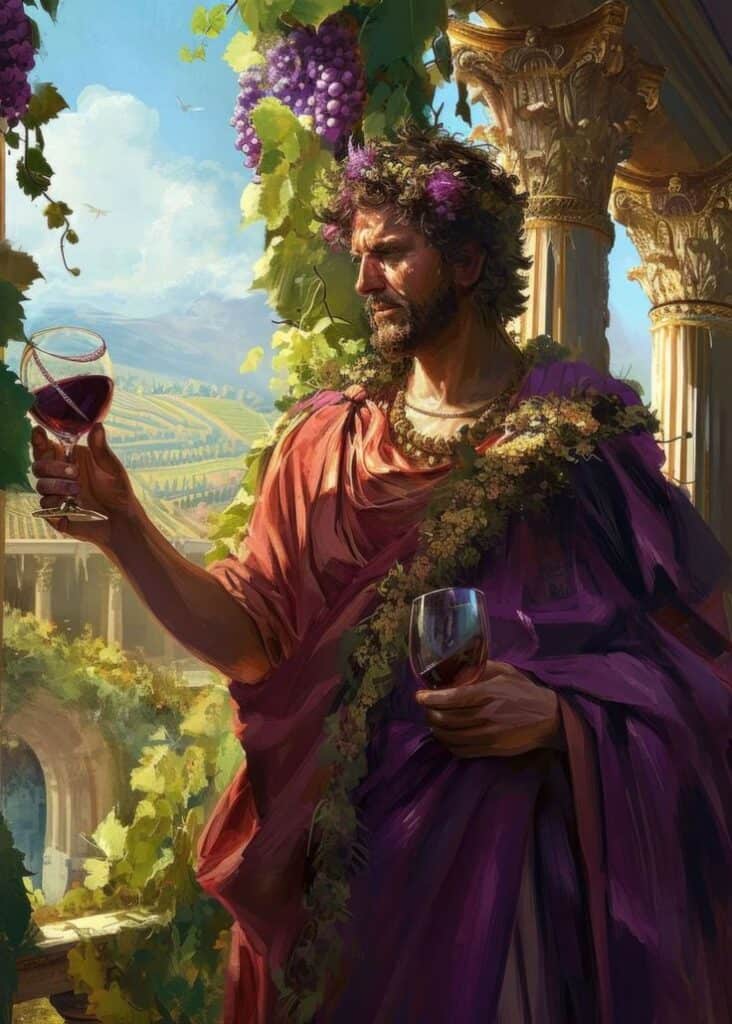
Hestia
Who was she? Hestia was the goddess of the hearth, home, and family. She represented domesticity and the warmth of the family unit.
Name origin: Her name comes from the Greek word hestia, meaning “hearth” or “fireplace.”
Fun fact: Hestia was one of the original Twelve Olympian gods but chose to remain a virgin and did not pursue a role in the more chaotic aspects of Olympus, focusing instead on the peace of home life.
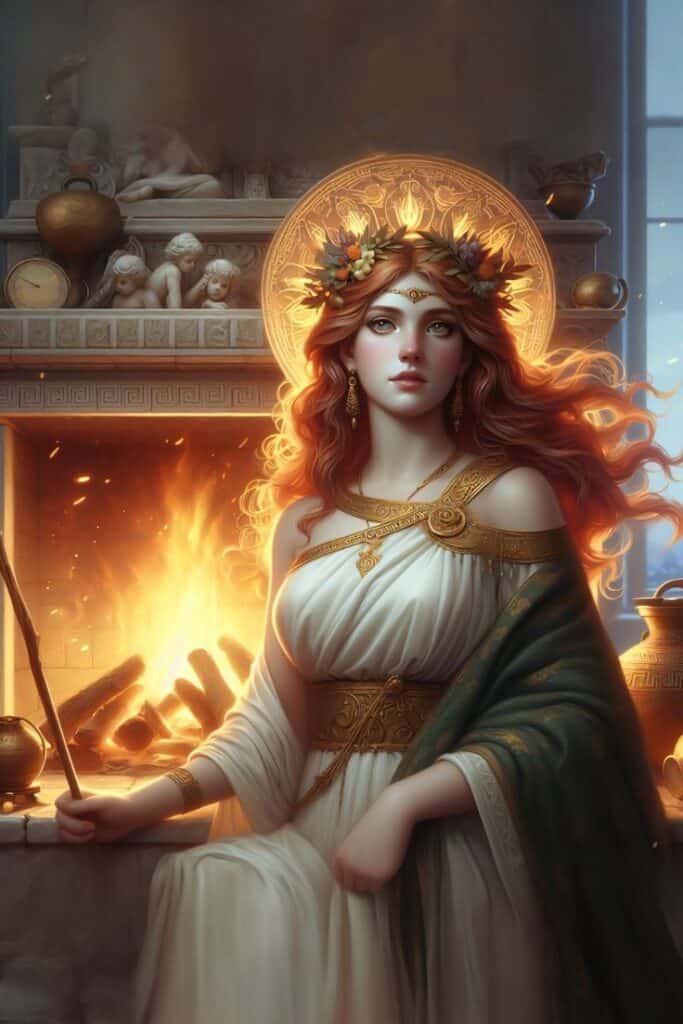
Ares
Who was he? Ares was the god of war, violence, and bloodshed, often associated with the chaotic and brutal aspects of conflict.
Name origin: His name originates from the ancient Greek word “Ares”. While there is little consensus on its exact meaning, it is often believed to signify “battle.”
Fun fact: Ares was not widely worshipped in Greece, as he was seen as disruptive. His symbol was the spear, and he often appeared alongside his companion, Eris, the goddess of strife. Before the Battle of Thermopylae, the Greeks, especially the Spartans, would have likely celebrated and invoked Ares as they prepared for battle.
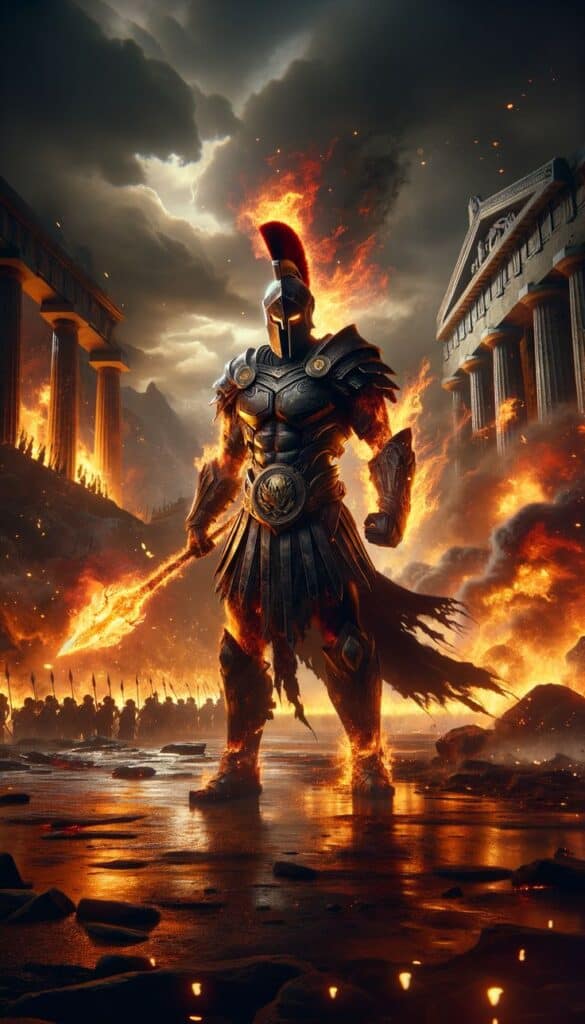
Persephone
Who was she? Persephone was the goddess of spring and the queen of the underworld, because she embodied the cycle of life, death, and rebirth.
Name origin: Her name is believed to mean “bringer of destruction” or “she who has come to be.”
Fun fact: Persephone’s myth involves her abduction by Hades, which leads to her spending part of the year in the underworld and the other part on earth, thus explaining the changing seasons.

Eros
Who was he? Eros was the god of love and desire, often depicted as a winged youth with a bow and arrows, symbolizing romantic attraction.
Name origin: His name comes from the ancient Greek word eros, which means “love” or “passion.”
Fun fact: Eros was often associated with Aphrodite and, in some myths, was considered one of the primordial gods, representing the fundamental force of love in the universe.
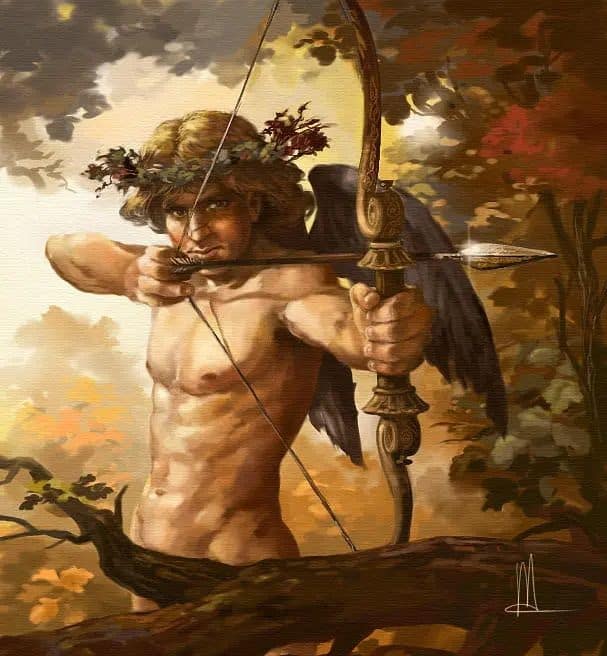
Nike
Who was she? Nike was the goddess of victory, often depicted as a winged figure who flew around battlefields granting victory to warriors.
Name origin: Her name comes from the Greek word nike, meaning “victory.”
Fun fact: Nike was often portrayed with a laurel wreath, symbolizing triumph. The famous sports brand takes its name from her, because she emphasizes the idea of victory in athletic pursuits.
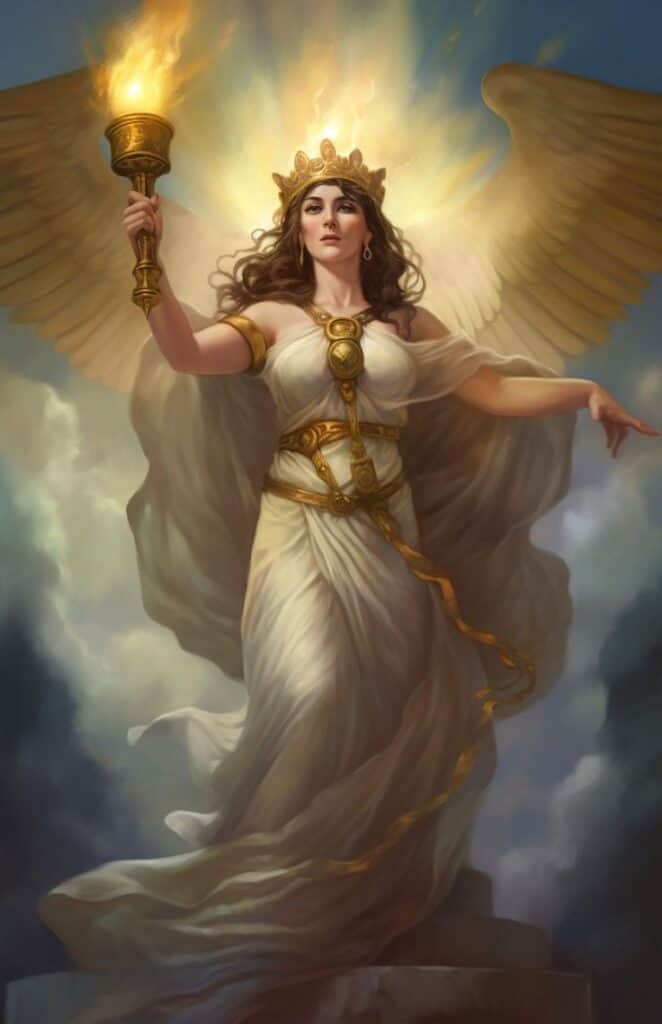
Helios
Who was he? Helios was the personification of the sun, responsible for driving his chariot across the sky each day, bringing light to the world.
Name origin: His name comes from the Greek word helios, which means “sun.”
Fun fact: Helios was often depicted as a radiant youth with a shining crown. He played a vital role in many myths, including the tale of his son, Phaethon, who attempted to drive his chariot but lost control.
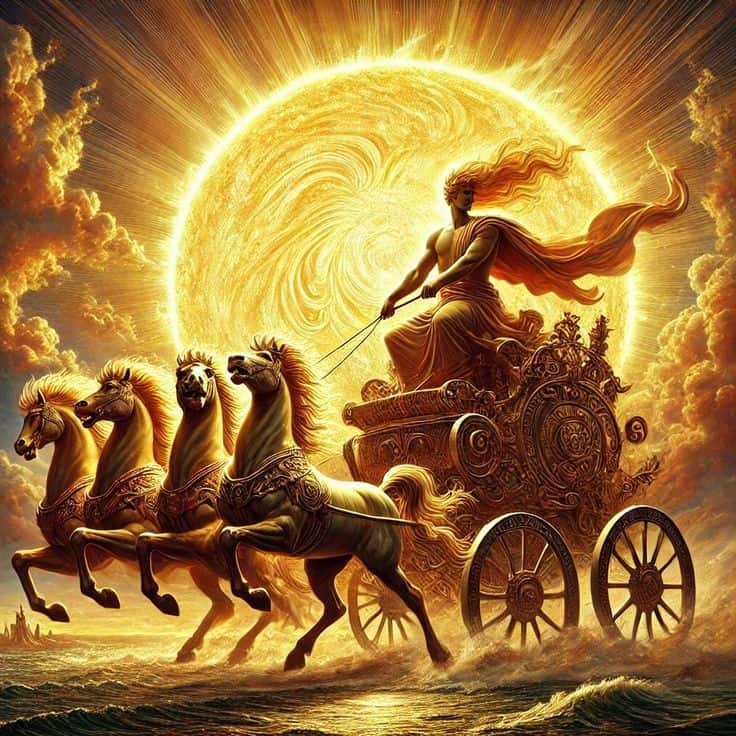
Thanatos
Who was he? Thanatos was the personification of death, representing a peaceful and gentle death as opposed to violent demise.
Name origin: His name comes from the Greek word thanatos, meaning “death.”
Fun fact: Thanatos was often depicted as a winged figure, similar to Hypnos, the god of sleep. In some myths however, he is portrayed as a serene and calm presence, guiding souls to the underworld.
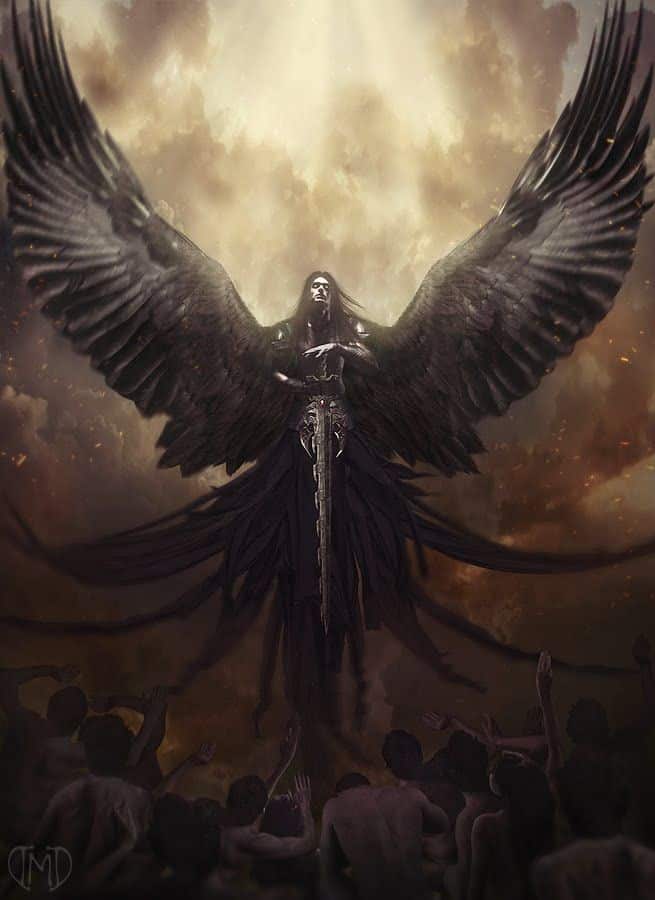
Tyche
Who was she? Tyche was the goddess of fortune, luck, and prosperity, often associated with the fate of cities and their inhabitants.
Name origin: Her name comes from the Greek word tykhē, meaning “luck” or “chance.”
Fun fact: Tyche was often depicted holding a cornucopia and a rudder, symbolizing abundance and the guiding of fate, respectively. She was widely worshipped in cities seeking prosperity.

Hebe
Who was she? Hebe was the goddess of youth and the cupbearer of the gods, serving nectar and ambrosia to the Olympians.
Name origin: Her name comes from the Greek word hebe, meaning “youth” or “young.”
Fun fact: Hebe was often depicted as a beautiful young woman, and she later married Heracles after his ascension to Olympus, granting him eternal youth.
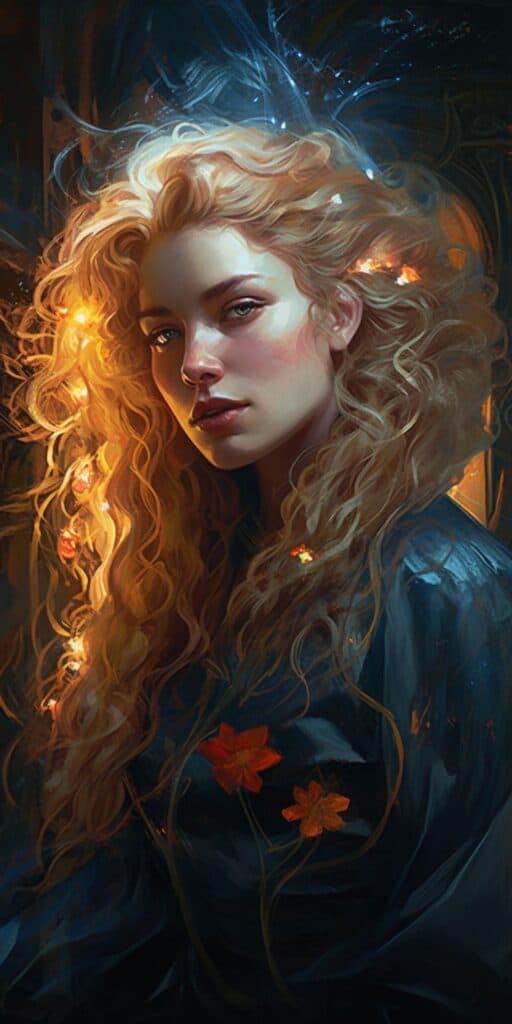
Hecate
Who was she? Hecate was the goddess of magic, witchcraft, and the moon, often associated with crossroads and the night.
Name origin: Her name comes from the Greek Hekate, but its exact meaning is uncertain; it may relate to “far-reaching.”
Fun fact: Hecate was often depicted holding torches or keys and was also revered for her ability to navigate the realms of the living and the dead. She was a protector of those who invoked her.
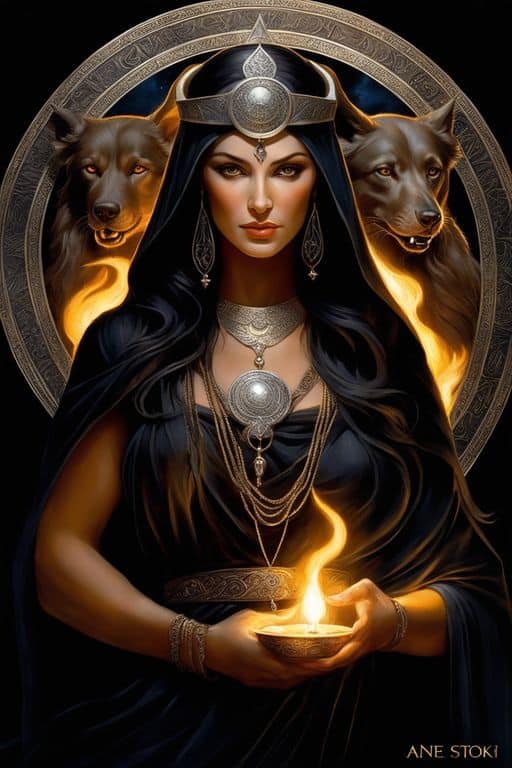
Gaia
Who was she? Gaia was the primordial goddess of the Earth, often considered the mother of all life and the ancestral mother of the gods.
Name origin: Her name comes from the ancient Greek word gaia, meaning “earth” or “land.”
Fun fact: Gaia was central to many myths, including the creation of the Titans. She is often depicted as a nurturing figure, because she symbolized fertility and the natural world.

Cronus
Who was he? Cronus was the leader of the Titans and the god of time, often associated with the harvest and the cyclical nature of time.
Name origin: His name comes from the Greek word kronos, which is often confused with Chronos, meaning “time.”
Fun fact: Cronus is famously known for swallowing his children to prevent them from overthrowing him, but he was ultimately defeated by his son Zeus, leading to the rise of the Olympian gods.
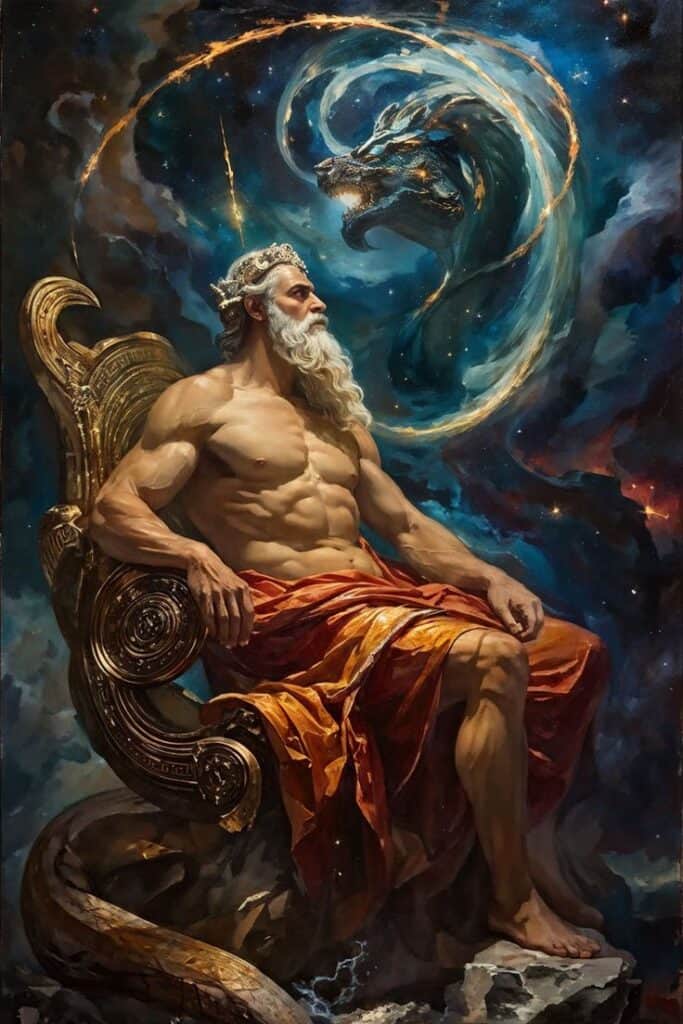
Janus
Who was he? Janus was the Roman god of beginnings, transitions, and endings, often depicted with two faces looking in opposite directions.
Name origin: His name comes from the Latin word ianua, meaning “doorway,” symbolizing transitions.
Fun fact: While Janus is primarily a Roman deity, he embodies themes found in Greek mythology. His duality represents the passage of time and the cyclical nature of life.
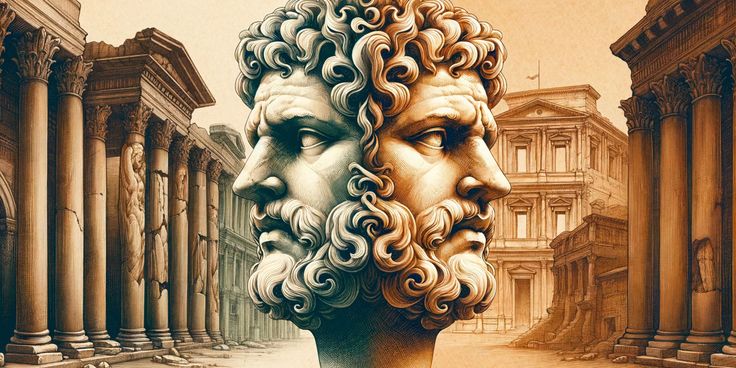
Pan
Who was he? Pan was the god of the wild, shepherds, and flocks, often associated with nature and rustic music.
Name origin: His name comes from the Greek word pan, meaning “all,” reflecting his role as a universal figure of nature.
Fun fact: Pan is often depicted with the legs and horns of a goat, playing a flute or pan pipes. He is known for his mischievous nature and was believed to cause panic in those who encountered him unexpectedly.

Eris
Who was she? Eris was the goddess of strife and discord, often representing conflict and chaos in both personal and societal matters.
Name origin: Her name comes from the Greek word eris, meaning “strife” or “discord.”
Fun fact: Eris is best known for instigating the Trojan War by tossing the Golden Apple of Discord among the goddesses, which led to a rivalry between Hera, Athena, and Aphrodite.
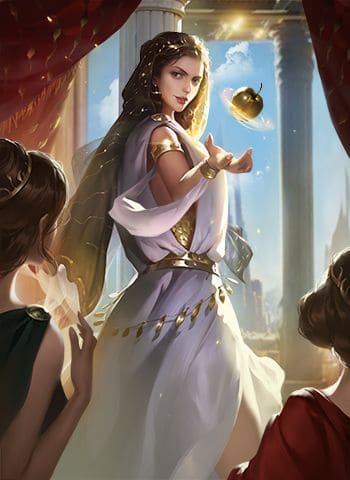
Aether
Who was he? Aether was the primordial god of the upper air, light, and the sky, often associated with the heavens and the brightness of the atmosphere.
Name origin: His name comes from the Greek word aithēr, meaning “pure, fresh air” or “upper sky.”
Fun fact: Aether is considered a personification of the bright, glowing upper regions of the sky, distinguishing him from other elemental gods like Gaia (Earth) and Tartarus (the abyss).
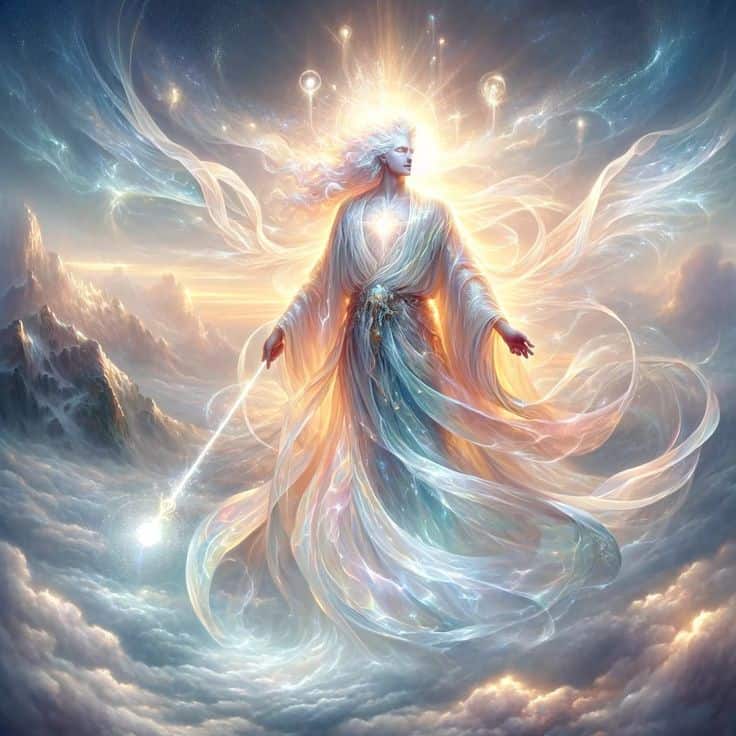
Morpheus
Who was he? Morpheus was the god of dreams, responsible for shaping and delivering dreams to mortals, often taking the form of those in the dreamer’s life.
Name origin: His name comes from the Greek word morphe, meaning “form” or “shape.”
Fun fact: Morpheus is one of the Oneiroi, the dream deities, and is often depicted with wings. He plays a crucial role in influencing the dreams and subconscious thoughts of humans.
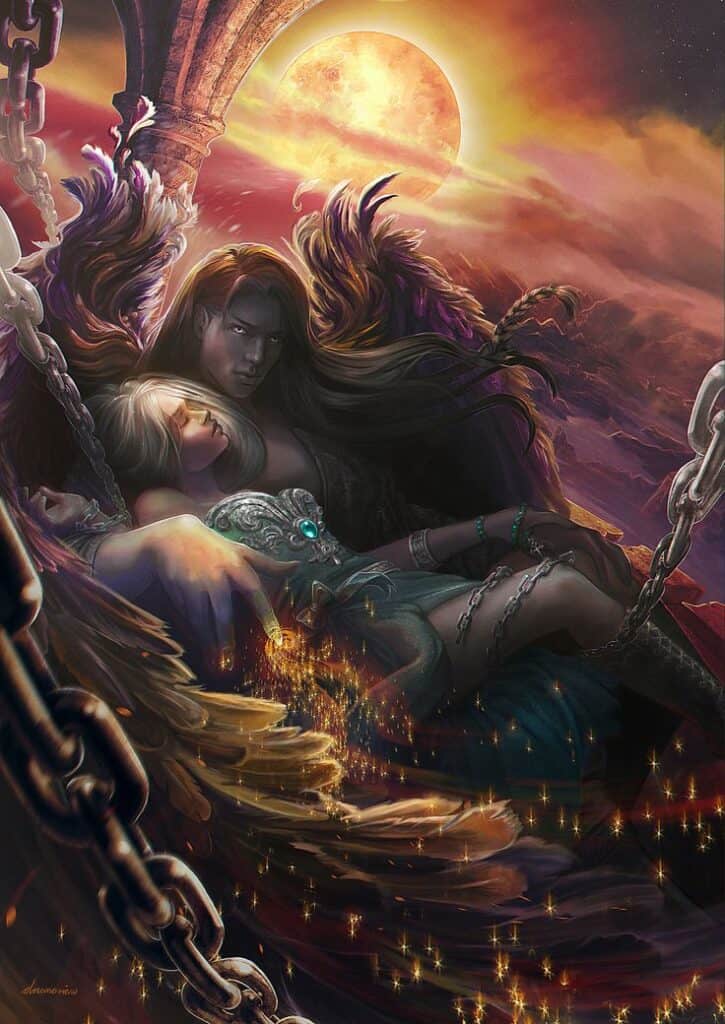
Nemesis
Who was she? Nemesis was the goddess of retribution, vengeance, and balance, often associated with the idea of divine justice.
Name origin: Her name comes from the Greek word nemesis, meaning “to give what is due” or “retribution.”
Fun fact: Nemesis is often depicted with a wheel or scales, symbolizing the balance of fortune. She punished hubris and ensured that people received their just desserts for their actions.
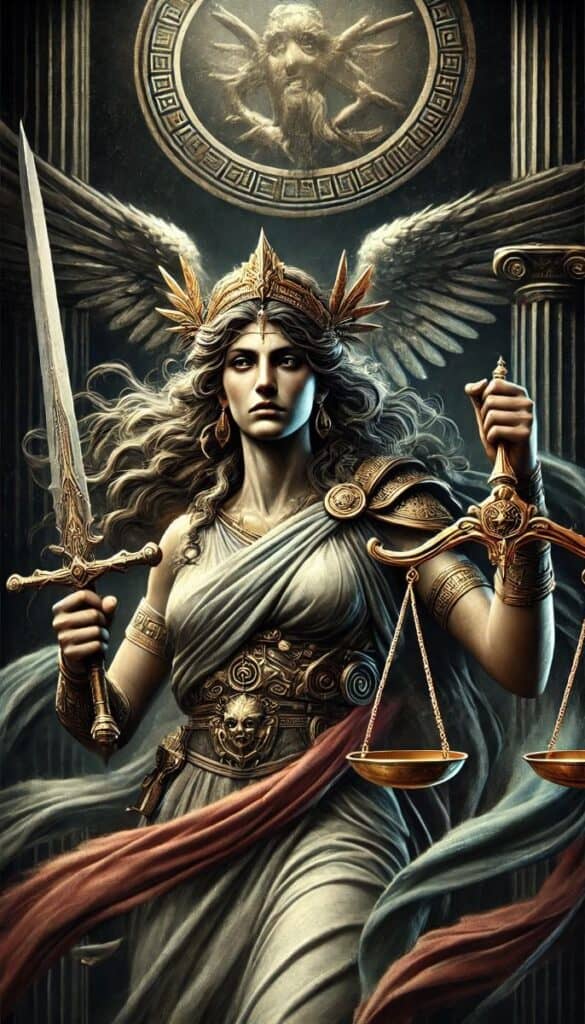
Asclepius
Who was he? Asclepius was the god of medicine, healing, and health, revered for his ability to cure diseases and bring the dead back to life.
Name origin: His name is derived from the Greek word Asklepios, with uncertain origins, but he is closely associated with healing practices.
Fun fact: Asclepius is often depicted holding a staff with a serpent wrapped around it, symbolizing rejuvenation and healing. His temples served as centers for healing, where people sought cures for their ailments.

Typhon
Who was he? Typhon was a monstrous giant and the personification of storms and chaos, often seen as a significant threat to the gods.
Name origin: His name comes from the Greek word Typhon, meaning “whirlwind” or “storm.”
Fun fact: Typhon is often depicted with a hundred dragon heads and was known for his immense size and strength. He challenged Zeus for supremacy, but was ultimately defeated and imprisoned under Mount Etna.
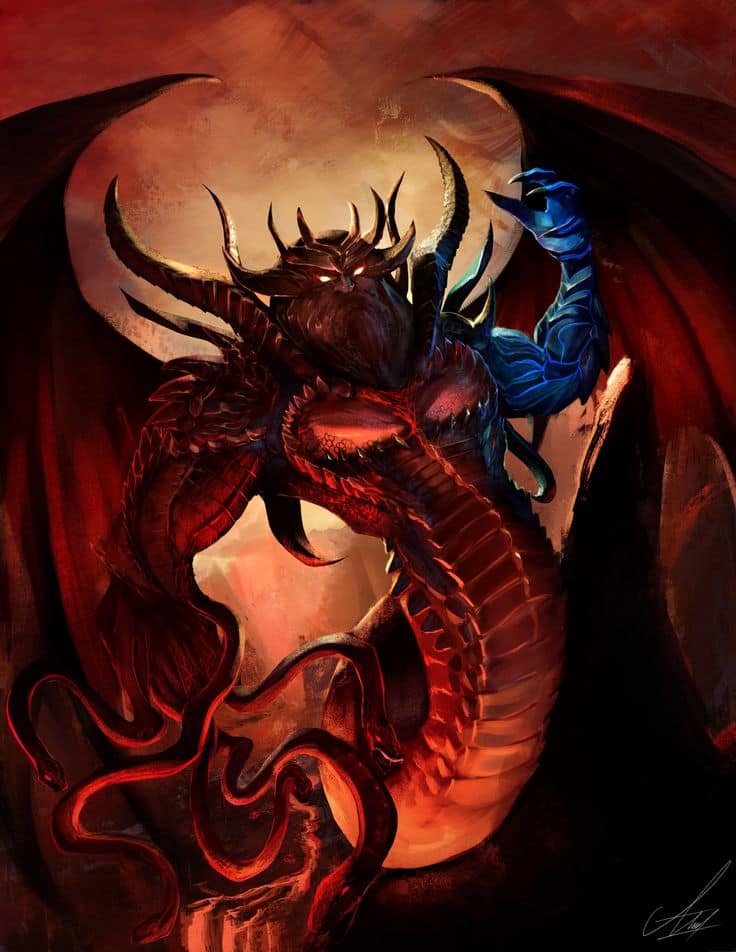
The Muses
Who were they? The Muses were the nine goddesses of the arts and sciences, inspiring creativity and intellectual pursuits in various fields.
Name origin: Their name comes from the Greek word mousa, meaning “muse” or “inspiration.”
Fun fact: Each Muse is associated with a specific domain: Calliope (epic poetry), Clio (history), Erato (lyric poetry), Euterpe (music), Melpomene (tragedy), Polyhymnia (sacred poetry), Terpsichore (dance), Thalia (comedy), and Urania (astronomy). They were believed to provide inspiration to artists and scholars alike.
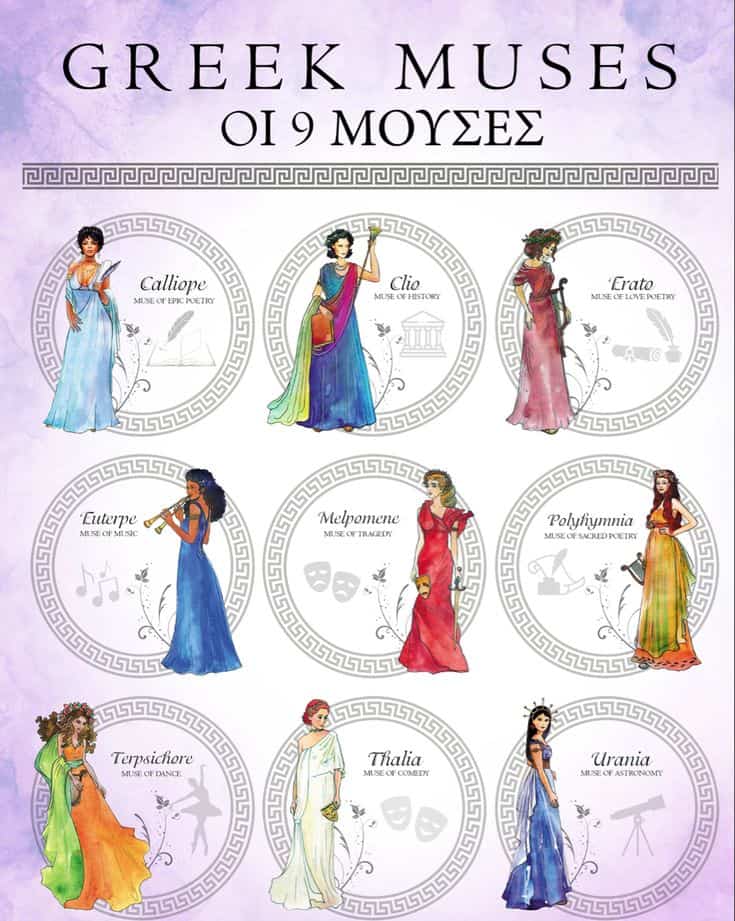
Names and Their Cultural Influence
Use in Modern Times
Many names from Greek mythology continue to have a significant impact on modern culture, permeating literature, art, and everyday life.
- Athena: The name Athena is widely used in various cultures, symbolizing wisdom and strength. It has been adopted in numerous literary works, such as the popular Percy Jackson series, where Athena is a key figure representing intelligence and strategy. The name is also used in educational institutions, like the Athenaeum, a term for a library or place of study.
- Hermes: The name Hermes has also found its way into contemporary culture. It appears in literature and is synonymous with speed and communication. The luxury brand Hermes is named after the god, reflecting qualities of elegance and craftsmanship. The concept of “hermeneutics,” the study of interpretation, is derived from Hermes, emphasizing his role as a messenger and interpreter.
- Dionysus: Dionysus, the god of wine and festivity, has influenced modern culture through names associated with joy and revelry. The term “Dionysian” refers to the chaotic and ecstatic aspects of life, frequently used in literature and discussions about art and philosophy. Festivals celebrating wine and harvest continue to bear his name, like Dionysia in ancient Greece.
- Nike: The name Nike, representing victory, is prevalent in modern society as the name of a major sports brand. The brand’s logo, the swoosh, symbolizes speed and motion, reflecting the goddess’s association with triumph and achievement.
Naming Conventions
In ancient Greece, naming conventions often reflected the importance of mythology and the belief in the influence of names on personal identity and destiny. Many families chose to name their children after gods, goddesses, or heroic figures, believing that these names could bestow certain qualities or characteristics upon them.
For instance:
- Hercules: Named after the hero Heracles, children named Hercules were thought to inherit bravery and strength.
- Achilles: Parents might name a son Achilles, hoping he would embody the hero’s valor and prowess in battle.
This tradition extended beyond the individual, as names tied families and communities to their cultural heritage. The act of naming a child after a deity or legendary figure was seen as a way to align their future with the virtues associated with those figures. Today, many cultures continue this practice, using names inspired by historical or mythological figures, reflecting a deep-rooted connection to identity, legacy, and belief in the influence of names on one’s life.
Lesser-Known Greek Mythology Names
Hypnos
- Who was he? God of sleep.
- Unique story: Hypnos lived in a cave in the Underworld, from where he brought sleep to gods and mortals alike. He once put Zeus to sleep on the request of Hera, allowing the Greeks to gain the upper hand in the Trojan War, showing that even the king of gods could be overcome by Hypnos’ powers.
Phobos
- Who was he? God of fear, often accompanying his father Ares in battle.
- Unique story: Phobos was a personification of terror and panic on the battlefield. Soldiers prayed to him before war, hoping to avoid his wrath. His influence was so strong that his name became the root of the modern word “phobia.”
Selene
- Who was she? Goddess of the moon.
- Unique story: Selene is known for her love affair with the mortal Endymion, whom she placed into eternal sleep so that she could visit him every night without him aging or dying. Her myth shows the moon’s connection with the passage of time and the mysteries of the night.
Triton
- Who was he? Messenger of the sea and son of Poseidon.
- Unique story: Triton was often depicted blowing a conch shell to calm or raise storms at sea. His presence could either help sailors on their journeys or doom them, depending on his mood, highlighting his control over the ocean’s unpredictability.
Eos
- Who was she? Goddess of the dawn.
- Unique story: Every morning, Eos would rise from the ocean and drive her chariot across the sky, heralding the arrival of the sun. She is linked to tragic love stories, one being her relationship with the mortal Tithonus. Eos begged Zeus to grant him immortality, but she forgot to ask for eternal youth, leading Tithonus to age endlessly.
Iris
- Who was she? Goddess of the rainbow and messenger of the gods.
- Unique story: Iris served as a link between the gods and humanity, delivering divine messages. She is often depicted with wings and a caduceus (messenger’s staff), traveling swiftly between realms, including from Mount Olympus to the Underworld. Her rainbow bridges symbolized communication between the heavens and earth.
Themis
- Who was she? Titaness of divine law and order.
- Unique story: Themis was the personification of justice and fairness. Often depicted holding scales, she presided over the proper conduct of both gods and humans. She played a critical role as an advisor to Zeus, particularly in maintaining cosmic order and justice.
Adonis
- Who was he? A mortal youth loved by both Aphrodite and Persephone.
- Unique story: Adonis’ beauty was so great that Aphrodite and Persephone fought over him. Zeus decreed that he would spend one-third of the year with each goddess and one-third with whoever he chose. Adonis was ultimately killed by a wild boar, and from his blood, the anemone flower was said to bloom, symbolizing the cycle of life, death, and rebirth.
Leto
- Who was she? Mother of Apollo and Artemis.
- Unique story: Leto was pursued by Hera and not allowed to give birth on solid land. She finally found refuge on the floating island of Delos, where she gave birth to the twin gods, Apollo and Artemis. Her myth reflects the difficulties faced by those who defy the will of more powerful gods.
Hymenaios
- Who was he? God of marriage and wedding ceremonies.
- Unique story: Hymenaios was invoked at weddings to ensure a harmonious and successful union. His presence was believed to bring happiness and prosperity to the newlyweds. He was often depicted with a torch, symbolizing the light and warmth that marriage brings to life.
Ananke
- Who was she? Goddess of necessity, fate, and inevitability.
- Unique story: Ananke was considered one of the primordial forces in the universe, often depicted holding a spindle, symbolizing the inescapable nature of fate. She and her consort Chronos (time) were believed to control the destinies of both gods and mortals, representing the inescapable power of time and necessity.
Nyx
- Who was she? Primordial goddess of the night.
- Unique story: Nyx was a powerful and mysterious figure, even feared by Zeus. She gave birth to several other important deities, including Hypnos (sleep) and Thanatos (death). Her myth suggests the idea of night as a time of both danger and deep contemplation.
Eurus
- Who was he? God of the east wind.
- Unique story: Eurus was one of the Anemoi, the gods of the four winds, each representing a cardinal direction. The east wind was associated with the late autumn and early winter, bringing storms and harsh weather. In myth, the Anemoi were often called upon to explain the changing seasons and natural forces.
Alcyone
- Who was she? A nymph and daughter of Aeolus, god of the winds.
- Unique story: Alcyone and her husband Ceyx were transformed into kingfishers by the gods after their tragic deaths. The calm, peaceful days at sea (known as “halcyon days”) were believed to occur when Alcyone, now a bird, laid her eggs and calmed the wind and waves.
Epimetheus
- Who was he? Titan of afterthought and the brother of Prometheus.
- Unique story: While Prometheus is known for his foresight, Epimetheus acted impulsively. He was responsible for giving all animals their survival traits but ran out of gifts when it came to humans. His lack of foresight led to humans receiving fire from Prometheus as compensation, further highlighting the contrast between the brothers.
Atropos
- Who was she? One of the three Fates (Moirai), specifically the one who cut the thread of life.
- Unique story: Atropos’ role was final and unavoidable; once she cut the thread of a mortal’s life, their fate was sealed, and they would die. Her name means “inflexible” or “inevitable,” signifying the inescapable nature of death and fate.
Phorcys
- Who was he? God of the hidden dangers of the deep sea.
- Unique story: Phorcys, along with his consort Ceto, fathered many sea monsters, including the Gorgons and Scylla. He represented the unknown terrors lurking in the ocean, an embodiment of sailors’ fears of what lay beneath the waves.
Eileithyia
- Who was she? Goddess of childbirth and labor pains.
- Unique story: Eileithyia was often invoked by women in labor. She was crucial in ensuring a safe delivery. Her importance is evident in myths where her presence or absence could determine the outcome of a birth, such as when Hera attempted to delay the birth of Heracles by holding Eileithyia back.
Harmonia
- Who was she? Goddess of harmony and concord.
- Unique story: Harmonia was the daughter of Ares and Aphrodite, representing a balance between love and war. Her wedding to Cadmus, the founder of Thebes, was a major event attended by all the gods, symbolizing unity and peace. However, her wedding gifts, including a cursed necklace, brought great misfortune to her descendants.
Aeolus
- Who was he? Ruler of the winds.
- Unique story: Aeolus could control the winds, making him a powerful ally or enemy to sailors. In the Odyssey, Aeolus gave Odysseus a bag containing all the winds but the west wind, allowing him to sail home. However, Odysseus’ crew opened the bag prematurely, blowing them off course.
Hemera
- Who was she? Primordial goddess of the day.
- Unique story: Hemera was the daughter of Nyx (night) and Erebus (darkness), and her role was to chase away the night every morning, bringing daylight to the world. In Greek cosmology, Hemera represented the constant cycle of night and day, an eternal dance between darkness and light.
Echidna
- Who was she? Mother of monsters.
- Unique story: Echidna was a half-woman, half-snake creature, married to the fearsome Typhon. Together, they gave birth to many of the most terrifying creatures in Greek mythology, including the Hydra, Cerberus, and the Chimera. She lived in a cave, where she raised her monstrous children.
Chione
- Who was she? Goddess of snow.
- Unique story: Chione was a minor goddess who personified snow. In one myth, she was loved by both Poseidon and Hermes. Her name has endured as a symbol of winter and the snowy landscapes she was believed to govern.
Astraeus
- Who was he? God of the stars and the dusk.
- Unique story: Astraeus was the father of the four winds (Anemoi) and the stars. He was often associated with the twilight and the onset of night, representing the time when stars appeared in the sky. Astraeus’ children were responsible for bringing the seasonal winds and celestial phenomena.
Metis
- Who was she? Goddess of wisdom, craft, and good counsel.
- Unique story: Metis was Zeus’s first wife and the mother of Athena. According to myth, Zeus swallowed Metis while she was pregnant with Athena, fearing that her offspring would be more powerful than him. Athena later emerged fully grown from Zeus’s head, symbolizing the birth of wisdom from within the god himself.
Dike
- Who was she? Goddess of justice and moral order.
- Unique story: Dike was one of the Horae (goddesses of the seasons and natural order) and represented human justice. She watched over the fairness of human actions and reported any wrongdoing to Zeus, therefore ensuring that divine justice would be served. Her symbol was the scales of justice, still used today as a symbol of law and fairness.
Eirene
- Who was she? Goddess of peace.
- Unique story: Eirene was another of the Horae, responsible for maintaining peace and prosperity in society. She was often depicted holding a cornucopia, representing abundance, and a torch, symbolizing enlightenment. She was venerated particularly in times of war as a symbol of hope for a return to peace.
Tithonus
- Who was he? A mortal prince loved by Eos, goddess of the dawn.
- Unique story: Eos asked Zeus to grant Tithonus immortality, but she forgot to ask for eternal youth. As a result, Tithonus aged endlessly, eventually becoming so frail that he turned into a grasshopper. His myth represents the dangers of immortality without eternal youth, a cautionary tale of time’s relentless passage.
Hesperides
- Who were they? Nymphs of the evening and guardians of the golden apples.
- Unique story: The Hesperides were entrusted by Hera to guard the golden apples of immortality in a garden at the edge of the world. These apples later became the object of one of Heracles’ twelve labors. The Hesperides’ association with the evening also connected them to the beauty of twilight.
Lachesis
- Who was she? One of the three Fates (Moirai), specifically the one who measured the thread of life.
- Unique story: While Clotho spun the thread of life and Atropos cut it, Lachesis determined how long each person’s life would be. She symbolized the allotment of fate and was also depicted holding a staff or measuring rod, which signified her control over life’s length.
Zephyrus
- Who was he? God of the west wind.
- Unique story: Zephyrus was the gentlest of the Anemoi and the bringer of spring and early summer breezes. He was also the lover of the goddess Chloris, with whom he fathered Carpus, the god of fruit. His soft winds were often associated with renewal, growth, and the awakening of nature after winter.
Moros
- Who was he? God of doom and fate.
- Unique story: Moros was a personification of impending doom. He was considered an unstoppable force that led people toward their destined end. Unlike the Moirai (the Fates), who controlled life’s length, Moros represented the certainty of fate and the inevitability of death.
Enyo
- Who was she? Goddess of war and destruction.
- Unique story: Enyo was a close companion of Ares, the god of war. In some myths, she was depicted as stirring up conflict and chaos, reveling in the bloodshed of battle. She was also shown wearing armor and holding a sword, symbolizing her destructive power.
Deimos
- Who was he? God of dread and terror.
- Unique story: Deimos, like his brother Phobos, was associated with the fear and horror of battle. While Phobos caused panic, Deimos represented the more internal, paralyzing terror. Together, the two brothers followed their father Ares into battle, embodying the darker aspects of war.
Alecto
- Who was she? One of the Furies (Erinyes), representing unceasing anger.
- Unique story: Alecto was one of the three Furies tasked with punishing mortals for crimes against the natural order, especially murder and disrespect toward family. She was relentless in her pursuit of vengeance, so her name means “unceasing” or “never-ending.” The Furies were feared as agents of divine retribution.
Gorgons
- Who were they? Three monstrous sisters: Stheno, Euryale, and the most famous, Medusa.
- Unique story: The Gorgons were terrifying creatures with snakes for hair and the ability to turn anyone who gazed upon them into stone. While Stheno and Euryale were immortal, Medusa was mortal and later slain by Perseus. Medusa’s head was used by Perseus as a weapon before it was given to Athena, who placed it on her shield (the Aegis). The Gorgons symbolized the dangers of feminine rage and the untamed forces of nature.
Graeae
- Who were they? The three gray sisters who shared one eye and one tooth.
- Unique story: The Graeae were the sisters of the Gorgons and served as protectors of their more fearsome siblings. In the myth of Perseus, the hero tricked the Graeae by stealing their shared eye and tooth, forcing them to reveal the location of the Gorgons. The Graeae were considered embodiments of old age and the fragility of life.
Aion
- Who was he? God of eternal time and the Zodiac.
- Unique story: Aion was a symbol of time that encompassed eternity, different from the chronological time represented by Chronos. He was often depicted as a serpent encircling the Zodiac, representing the endless cycle of time and the heavens. Aion’s influence extended to later philosophical ideas about infinity and the nature of time.
Prometheus
- Who was he? A Titan and benefactor of humanity.
- Unique story: Prometheus is best known for stealing fire from the gods and giving it to humanity, symbolizing knowledge and civilization. As punishment for defying Zeus, he was bound to a rock where an eagle would eat his liver daily, only for it to regenerate overnight. His act of rebellion made Prometheus a symbol of resistance, creativity, and the pursuit of knowledge at great personal cost.
Pandora
- Who was she? The first human woman, created by the gods.
- Unique story: Pandora was gifted a box (or jar) by the gods, which she was instructed never to open. Driven by curiosity, she eventually opened it, releasing all the evils of the world—sickness, death, and sorrow—but she closed it before hope could escape. Pandora’s story reflects themes of curiosity, consequence, and the human condition. The phrase “Pandora’s box” remains a symbol of unintended consequences triggered by a single action.
Odysseus
- Who was he? King of Ithaca and hero of Homer’s Odyssey.
- Unique story: Odysseus is famous for his intelligence, cunning, and ten-year journey home from the Trojan War. His adventures include encounters with the Cyclops, the Sirens, and the witch Circe, all while navigating divine obstacles from gods like Poseidon. Known for his cleverness and determination, Odysseus also devised the Trojan Horse strategy, leading to the fall of Troy. His name is synonymous with long, adventurous journeys and resilience.
Epimetheus
- Who was he? Brother of Prometheus, known for his lack of foresight.
- Unique story: Unlike his wise brother Prometheus, Epimetheus was impulsive and accepted Pandora from the gods without thinking of the consequences. He later realized the trouble he had brought upon humanity with Pandora’s box. Epimetheus represents the concept of hindsight, or actions done without considering the long-term effects, in contrast to Prometheus, who looked ahead.
Narcissus
- Who was he? A beautiful youth who fell in love with his own reflection.
- Unique story: Narcissus was so entranced by his own reflection in a pool of water that he became unable to leave it, eventually wasting away. The gods turned him into the narcissus flower, symbolizing self-love and vanity. His story gave rise to the modern term “narcissism,” describing excessive self-obsession.
Atalanta
- Who was she? A swift-footed huntress.
- Unique story: Atalanta was abandoned at birth but raised by bears, later becoming an exceptional athlete and hunter. She famously participated in the Calydonian Boar Hunt and offered to marry anyone who could beat her in a foot race, a challenge she never lost until Melanion (with the help of Aphrodite) distracted her with golden apples. Atalanta’s name represents strength, independence, and prowess in both myth and sports.
Phaeton
- Who was he? The mortal son of Helios (the sun god).
- Unique story: Phaeton sought to prove his divine parentage by driving his father’s sun chariot across the sky. However, he lost control, scorching the earth and nearly destroying it before Zeus struck him down with a thunderbolt. Phaeton’s reckless ambition symbolizes youthful overconfidence and the danger of overreaching.
Orpheus
- Who was he? A legendary musician and poet.
- Unique story: Orpheus, famed for his ability to charm all living things with his music, ventured into the underworld to retrieve his wife, Eurydice, from the dead. He was granted her return on the condition that he not look back at her until they reached the surface, but in a moment of doubt, he turned and lost her forever. Orpheus represents the power of art, love, and tragic loss.
Daedalus
- Who was he? A master craftsman and inventor.
- Unique story: Daedalus is best known for creating the Labyrinth to imprison the Minotaur and for crafting wings out of feathers and wax for himself and his son, Icarus. Icarus famously flew too close to the sun, causing the wax to melt, and fell into the sea. Daedalus symbolizes ingenuity, creativity, and the consequences of ambition.
Ariadne
- Who was she? Daughter of King Minos and helper of Theseus.
- Unique story: Ariadne aided Theseus in escaping the Labyrinth by giving him a ball of thread to find his way back after defeating the Minotaur. Despite her assistance, Theseus abandoned her on the island of Naxos, where she was later found and married by the god Dionysus. Ariadne’s name is associated with both love and betrayal, reflecting the complexities of relationships.
Perseus
- Who was he? A heroic demigod and slayer of Medusa.
- Unique story: Perseus, the son of Zeus and Danaë, embarked on many legendary quests. He is best known for defeating Medusa, the Gorgon, whose gaze turned people to stone. With help from Athena and Hermes, Perseus used a reflective shield to avoid Medusa’s gaze and decapitate her. He later used her head as a weapon to save the princess Andromeda from a sea monster. Perseus symbolizes bravery, resourcefulness, and the archetype of the classical hero.
Chiron
- Who was he? A wise centaur and teacher of heroes.
- Unique story: Unlike other centaurs, who were wild and unruly, Chiron was known for his wisdom, kindness, and skill in medicine. He tutored many of the greatest heroes in Greek mythology, including Achilles, Jason, and Heracles. Chiron was accidentally wounded by Heracles with a poisoned arrow and, being immortal, could not die but lived in great pain. He eventually relinquished his immortality to free himself from suffering. Chiron represents the ideal of a mentor and the self-sacrifice of wisdom.
Icarus
- Who was he? Son of Daedalus, who flew too close to the sun.
- Unique story: Icarus and his father, Daedalus, crafted wings of feathers and wax to escape the Labyrinth in Crete. Despite his father’s warnings not to fly too high, Icarus soared too close to the sun, melting the wax in his wings, and he fell to his death. Icarus’ story is a cautionary tale about the dangers of overambition and hubris, symbolizing the consequences of ignoring wise counsel.
Circe
- Who was she? A powerful sorceress.
- Unique story: Circe lived on the island of Aeaea, where she transformed men into animals using magical potions. When Odysseus arrived on her island during his journey home from Troy, she turned his men into pigs. With the help of Hermes, Odysseus resisted her magic, and she eventually helped him and his men continue on their journey. Circe’s story represents the seductive and transformative power of magic, as well as the tension between control and freedom.
Endnote
In conclusion, Greek mythology offers a rich tapestry of names, each carrying a story that has shaped cultures across time. Indeed, from Zeus to Athena, and from lesser-known figures like Circe and Chiron, these names have influenced not only ancient Greek culture but also modern literature, art, and language. Moreover, these mythological figures represent universal themes, such as bravery, love, wisdom, and ambition, which resonate with humanity even today.
In addition, many of these names, like Apollo and Hermes, continue to be used in modern contexts, showing how ancient stories still hold power. For instance, the names of gods and heroes are frequently seen in the arts, literature, and even space programs, demonstrating how their legacy transcends time.
Furthermore, the naming conventions of the ancient Greeks, where children were named after gods and heroes, reflect their belief in the power of destiny and personality. Likewise, these names, imbued with mythological meaning, carried hopes and aspirations for the future.
To sum up, the legacy of Greek mythology names is vast and enduring. Ultimately, whether in modern novels, everyday speech, or cultural references, these ancient names remain part of our shared human experience. Thus, the myths continue to teach us about ourselves and the world, connecting the ancient past to the present. All in all, Greek mythology names are timeless symbols of the human condition.

